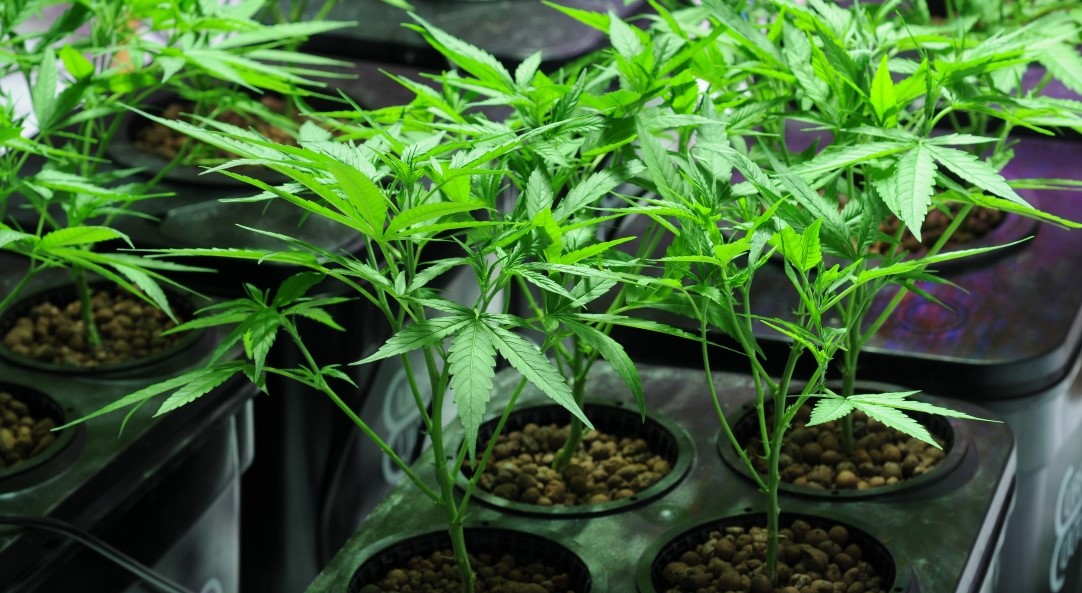Uncategorized
Hydroponic Weed: Pros, Cons, Methods, and More
Growing your own cannabis is a labor of love, and hydroponic marijuana has become one of the most popular techniques for indoor growers all over the world.
A hydroponic marijuana garden is one that contains no soil. Growers will use their own nutrients at various stages of the growth process, rather than the natural nutrients in soil, to produce hydroponic cannabis.
Because pests are less likely to visit hydro reservoirs, they can be more vulnerable to pest problems than soil reservoirs. If there is a pump failure or you run out of water, hydroponic systems can harm the roots. Because more things may go wrong in hydroponics, compared with soil farming, a minor problem like a lack of water for an hour or a slight change in pH levels might ruin the crop or destroy it. As a beginner, this is why it’s critical to start with one of the easier techniques.
Despite the extra care required, hydro grows offer growers far more control over the nutrients that go into the plants and allow the water that is not absorbed by the plants’ roots to be recycled back into the system.
Whether you live in a state where growing your own plants is permitted or have to keep things on low-key, hydroponic farming might benefit your operation.

What Is Hydroponic Weed?
Hydroponic cannabis is a style of cannabis cultivation that relies on a soil-free, nutrient-rich system. Instead of dirt, hydroponic growers utilize media such as sand, gravel, or water with added nutrients as their primary growing mediums – the most popular technique for hydroponic cultivators.
Hydroponics are recognized as one of the most efficient ways to cultivate, especially indoors.
Hydroponic systems, owing to their increased focus on nutrient and oxygen absorption, provide growers greater control over the growth process. They’re also less susceptible to pests (so no need for pesticides), and they tend to help crops mature more quickly.
If you have the time and patience to invest in your plants’ development, growing hydroponic cannabis may be an excellent choice for you. If you don’t want to take care of it yourself, are on a tight budget, are new to gardening, or simply have a huge old-fashioned green thumb, then growing with dirt might be the way to go.
Fortunately, we’ve already done the legwork for you, separating the advantages and drawbacks of hydroponic cannabis cultivation so you can choose which method shouts your name the most.
The Pros of Growing Hydroponic Cannabis
Let’s start by discussing the advantages of growing marijuana hydroponically as opposed to in soil before getting into the complicated mechanics of this sort of operation.
- Plants tend to produce more output from smaller growth regions as a result of the closer control of the process.
- The fact that hydroponic marijuana may result in better-quality plants is due to the same cause.
- You may have a better chance of saving weaker, high-risk plants by paying close attention to their nutrition and feeding regimen.
- Although this method is more expensive in the long run, it can be done without pesticides, since no soil is required.
- Hydroponic cannabis matures faster, allowing you to harvest up to six times each year.
- Water stress is less of a concern when using hydroponic systems for weed since you can simply add more water as needed.
- Hydroponics eliminate the need for lighting, meaning your plants will grow in total darkness. This is ideal for individuals with limited growing space or who wish to keep their operation a secret.
The Cons of Growing Hydroponic Weed
There are a number of drawbacks to using organic methods to produce cannabis, much like there are with traditional cultivation. Just as there are several disadvantages associated with producing marijuana the old-fashioned way, hydroponic grow operations also include a few negatives that may be off-putting, depending on your demands and expectations.
Here are some of the most frequent disadvantages that growers have reported while utilizing hydroponics to cultivate plants:
- Hydroponic systems for growing marijuana are quite costly, especially if you go all out. If you’re producing wholesale cannabis for the adult-use market or just for personal use, hydroponics may not be cost-effective for your requirements.
- You must first have a thorough understanding of the technicalities involved in growing hydroponically in order to profit from it. This may or may not be worthwhile for recreational/personal use growers.
- Water-borne diseases are more likely to strike hydroponic farms, but they’re also more difficult to contain. Water-borne illnesses can be particularly harmful and nearly impossible to control in hydroponic environments.
- If your system is powered by electricity or timers, you risk losing everything if the power goes out.
Different Types of Hydroponic Systems for Weed
Whether or not to establish a hydroponic garden is a difficult but important decision. You probably already have an opinion on whether or not this approach would work for you, based on what you’ve read so far. And if a hydroponic system appeals to you as a grower, there are numerous ways to go about it.
One of the most crucial factors to consider is the distinction between active and passive hydroponic techniques.
Passive strategies will utilize a “medium,” which is essentially a soil substitute that contains the nutrients, water, and oxygen your roots need to grow. Rockwool, expanded clay, perlite, and vermiculite are some of the most popular media.
Alternatively, methods that require more attention include active techniques. In these situations, the grower will apply the nutrients to the plant actively, giving it a more hands-on, customized approach for the plants’ requirements.
The most versatile approach is to use both methods, which call for the usage of several nutrients and minerals:

- Copper
- Phosphorus
- Magnesium
- Potassium
- Nitrogen
- Iron
- Zinc
- Calcium
- Chlorine
- Boron
- Manganese
The following nutrients are necessary for optimum growth: iron, magnesium, potassium, phosphorous and nitrogen. These are the most important elements in plant nutrition. You’re free to use your own approach as long as you have these key minerals (and don’t misuse them). Here are some of the most popular hydroponic systems developed by growers throughout the world:
#1) Drip System
A drip system is one of the most popular ways to grow your plants without soil, and it’s used by most hydro farmers. The nutrients are fed into a tube or similar device that falls into the top of the container.
Your plant’s roots will also receive timed nutrients, as well as any extra nutrients that didn’t previously get absorbed by the plant. This method needs a lot of attention since nutrient strength levels and pH changes must be monitored on a regular basis.
#2) Deep Water Culture
This is one of the most basic hydroponic cannabis growing systems. A deep water culture system, which is typical among beginners or cost-conscious growers, requires every plant to be housed in its own container.
The seeds are then planted in their pots and placed in a tray with water. The water will be enriched with nutrients, which will be kept oxygenated by air pumps.
Another consideration with this method is dry time: ensure that your roots aren’t continually immersed in water and that they have adequate access to oxygen.

#3) Wick System
This is another beginner-friendly system that requires no moving parts and is easy to set up. Your plants will receive nutrients through a wick made of cotton or yarn. This method is recommended for smaller plants, as larger plants might use up the nutrients faster than they can be supplied.
This system is straightforward, but it isn’t very efficient when you want to grow a large crop. For a low-maintenance, personal-use grower who isn’t supplying any retail demands, a wick system is preferable.
#4) Ebb and Flow System
Ebb and flow systems are simple to operate in both the herb and veg spaces. These hydroponic systems function by flooding the grow tray with required minerals, which drain back into a reservoir.
When the roots are sprayed and watered, a submerged pump will ensure that they soak up nutrients and air throughout the day.
Although the approach is basic, it’s vulnerable to power cuts, timer malfunctions, and pump failures, which is something to keep in mind if your business has a lot of money riding on its outcome.
#5) Nutrient Film Technique
If you want to use the Nutrient Film Technique, you’ll need a lot of technical knowledge about hydroponic techniques.
In this type, a porous medium like rockwool is used. This approach includes a steady supply of nutrients that are delivered to the grow tray and then returned to a reservoir, comparable to the ebb and flow technique.
However, if you do not take appropriate measures to safeguard your plants’ roots from light, this process may result in the roots drying out too quickly.
The NFT technique, between this, the necessity to check temperatures and oxygen levels every few seconds, and the danger of a power outage destroying everything, is only advised for more experienced gardeners who are committed to a fully hands-on operation.
Hydroponic Weed: Tips And Tricks For Success
There are several methods to make hydroponic weed farming work for you, whether you’re a seasoned grower, a novice, or somewhere in between. But before you start your cannabis adventure, keep the following pointers in mind for optimum success.
- Keep your equipment sterile. This must not be overlooked in any way, as it is critical for your hydroponic system to be 100% sterile to prevent bacteria from developing and spreading. Protect your plants from water-borne illnesses that are more common in hydro culture.
- Keep a close eye on water pH. Another element to consider is that the pH levels in your hydro grow system should be maintained at optimal conditions. A slightly acidic pH will help encourage the development of helpful fungus, which is beneficial for cannabis cultivation.
- Keep just as close an eye on temperature and oxygen levels. The two are inextricably linked: healthy temperature levels and good circulation are both essential for healthy cannabis plants.
- Make sure the right humidity levels are maintained. This can be perplexing, but it is critical for indoor operations to flourish. You’ll start with a high humidity level and work your way down as the plants grow.
- Make sure your light setup is working for you (and your plants). Unfortunately, there is no one-size-fits-all solution to this question, but good lighting for plant development is critical. Take stock of your location (room size, temperature, natural light exposure, plant size, etc.) and make any necessary modifications.
Final Thoughts
If you think about the various elements we’ve covered, maintaining your hydroponic weed garden or company shouldn’t be too difficult. Take this article as a guide to setting up your first hydroponic marijuana garden if you are just getting started. Gardening is a great stress reliever, and making some additional money while doing it makes it even better.


